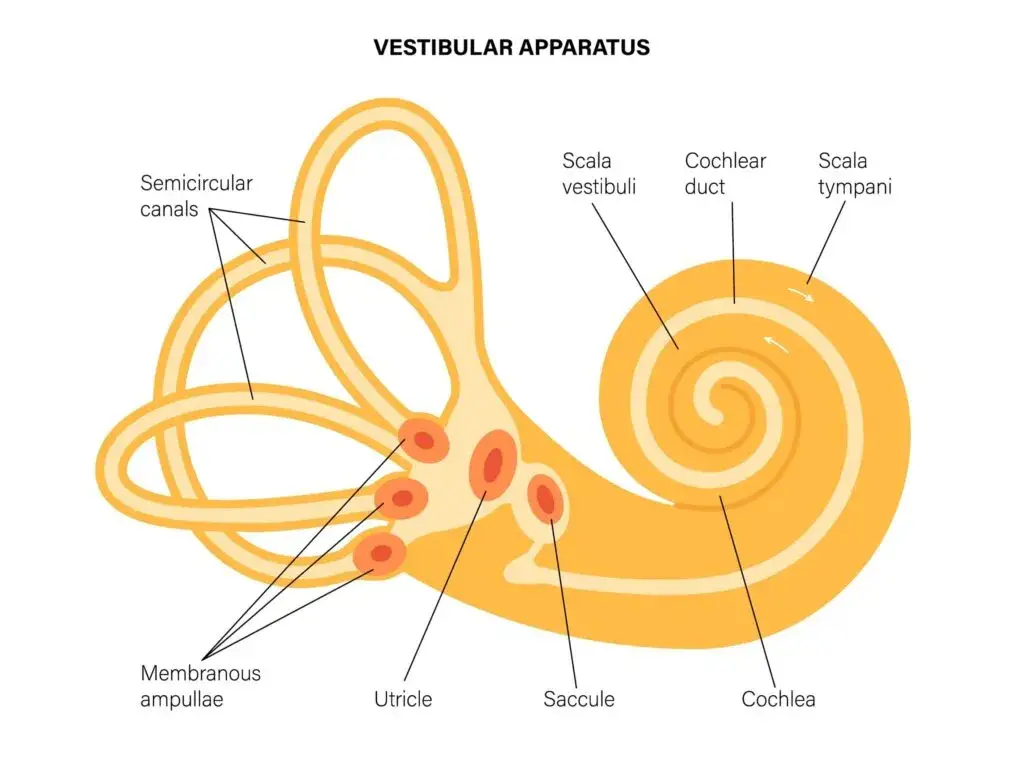
Introduction
Neck pain Relief: Neck Pain is one of the most pervasive musculoskeletal complaints, affecting an estimated 30–50% of adults annually and up to 70% at some point in their lives. What begins as a minor stiffness or discomfort can evolve into chronic pain that interferes with work, sleep, exercise, and even leisure activities. Whether your neck pain stems from hours spent hunched over a computer, stress-related muscle tension, sports or motor vehicle injuries, or degenerative changes, it can severely impact your quality of life.
If you’re in Lakewood Ranch, Florida, and seeking more than temporary relief—if you want a lasting solution that addresses the root cause of your neck pain—consider the specialized upper cervical chiropractic care at Lavender Family Chiropractic. Unlike general chiropractic adjustments that involve twisting or “popping” multiple spinal segments, upper cervical chiropractic focuses precisely on the atlas (C1) and axis (C2) vertebrae.
These two tiny bones at the top of your spine play an outsized role in neurological communication between the brain and body. Even the slightest misalignment can irritate the spinal cord or brainstem, triggering muscle tension, joint stress, and chronic pain. Our neck pain treatment in Lakewood Ranch Florida is unlike any other form of care that you have had in the past. Our doctors sole focus is the cervical spine and they see great results when it comes to treating neck pain, migraines, vertigo, and other complex conditions of the cervical spine.
At Lavender Family Chiropractic, Dr. Rusty Lavender, Dr. Jacob Temple, and Dr. Will Guzinski combine cutting‑edge 3D CBCT imaging with functional nervous system scans (Tytron®) to pinpoint misalignments that other providers might miss. We then deliver gentle, targeted adjustments without forceful popping or twisting, allowing your body to rebalance and heal naturally. In this comprehensive guide, we’ll explore:
- The underlying causes and typical symptoms of neck pain
- How atlas and axis misalignments disrupt the nervous system
- Advanced diagnostic tools that ensure pinpoint accuracy
- Our patient‑specific, low‑force adjustment techniques
- Complementary therapies, exercise protocols, and lifestyle modifications
- Real patient success stories from Lakewood Ranch and beyond
- Service areas throughout Sarasota County, including Bradenton, Parrish, and Siesta Key
- Top 15 FAQs about neck pain and upper cervical chiropractic
- How to schedule your first consultation
By the end of this article, you’ll understand why Lavender Family Chiropractic is regarded as the premier chiropractor in Sarasota, Florida, for neck pain relief, how upper cervical chiropractic differs from traditional care, and how you can reclaim a pain‑free life.
Neck Pain Relief- Understanding Neck Pains Causes and Symptoms
Common Causes of Neck Pain
Poor Posture and “Tech Neck”
In today’s digital age, many people develop “tech neck” from prolonged forward head posture while using smartphones, tablets, or laptops. Each inch your head juts forward adds approximately 10 pounds of leverage on your cervical spine, leading to chronic strain in the muscles, ligaments, and joints of the neck. Over time, this sustained stress can tighten deep cervical muscles, irritate facet joints, and accelerate degenerative disc changes. This can and does lead to chronic neck issues in many people.
Repetitive Strain and Occupational Risks
Jobs or hobbies that involve repetitive head movements—such as assembly‑line work, painting, dental work, or hairstyling—can overwork certain neck muscles while under‑utilizing others. This imbalance often leads to trigger points, muscle knots, and micro‑tears in cervical tissues, contributing to persistent soreness and stiffness.
Acute Trauma and Whiplash
Even seemingly minor impacts, like low‑speed automobile collisions, can subject the neck to sudden acceleration‑deceleration forces. This mechanism, known as whiplash, can sprain or strain the soft tissues, and critically, shift the atlas (C1) and axis (C2) out of their optimal position. Patients may not feel immediate pain, yet develop headaches or neck tightness days or weeks later.
Degenerative Disc and Joint Disease
As we age, cervical intervertebral discs naturally lose hydration and height, narrowing the space between vertebrae. This can cause uneven loading on facet joints, spur bone growth (osteophytes), and irritate nearby nerve roots—manifesting as dull, aching neck pain or sharp, shooting pains into the shoulders and arms.
Stress and Psychosocial Factors
Emotional stress often translates into physical tension. When stressed, people subconsciously tighten the muscles around the neck and shoulders—a fight‑or‑flight response that, if chronic, leads to increased muscle tone, restricted blood flow, and eventually pain.
Recognizing the Symptoms
- Localized Stiffness: Difficulty turning or tilting the head, especially after prolonged immobility (e.g., sleeping or working)
- Radiating Pain: Discomfort that travels from the neck into the shoulders, upper back, or even down an arm (cervical radiculopathy)
- Headaches and Migraines: Tension‑type headaches often start at the base of the skull and can evolve into migraines if untreated
- Nerve‑Related Sensations: Tingling, numbness, or weakness in the arms or hands, indicating potential nerve root compression
- Reduced Range of Motion: Persistent tightness that limits everyday activities, such as checking blind spots when driving
- Muscle Spasms: Involuntary contractions of cervical muscles leading to sudden increases in pain and stiffness
Left unaddressed, these symptoms can become cyclical, as pain causes muscle guarding, which in turn exacerbates joint misalignment and nerve irritation—creating a self‑perpetuating cycle of discomfort.
What Is Upper Cervical Chiropractic Care?
The Unique Role of the Atlas (C1) and Axis (C2)
The atlas and axis are the first two vertebrae directly beneath the skull. Unlike other spinal segments, they have specialized anatomy that supports the weight of the head and allows nearly 50% of the neck’s rotational movement. Critically, they encase the top of the spinal cord and brainstem, regions responsible for vital neurological functions including balance, blood pressure regulation, and sensory processing.
Why Precision Matters
Because of their proximity to the brainstem, even a misalignment of 0.5–1 millimeter can disrupt cerebrospinal fluid flow, irritate the central nervous system, and manifest as neck pain, headaches, or even systemic issues like dizziness and vertigo.
How Misalignments Trigger Pain
When the atlas or axis shifts:
- Mechanical Stress: Uneven load distribution on facets and intervertebral discs
- Muscular Compensation: Surrounding muscles tighten to stabilize the joint, leading to chronic tension
- Neurological Interference: Pressure on nerve roots or altered brainstem signaling, causing pain referral and dysautonomia
Upper cervical chiropractic care is the only method that isolates and corrects these specific vertebrae without adjusting other spinal segments. By restoring the atlas and axis to their ideal position, normal biomechanics and neurological communication are reestablished, allowing the body to self‑regulate and heal.
Advanced Diagnostics at Lavender Family Chiropractic
3D CBCT X‑Ray Imaging
Going Beyond 2D
Traditional X‑rays provide only flat, layered images, making it difficult to accurately detect small misalignments in the upper cervical spine. At Lavender Family Chiropractic, we utilize 3D Cone‑Beam Computed Tomography (CBCT), which delivers high‑resolution, volumetric scans. These scans allow us to:
- Measure Vertebral Rotation and Tilt: Assessing alignment in all planes (sagittal, coronal, axial)
- Evaluate Joint Spaces: Identifying uneven disc heights and potential impingement
- Visualize Bone Quality: Detecting early degenerative changes or asymmetries
By capturing a full three‑dimensional view, CBCT imaging ensures no misalignment goes unnoticed, and each adjustment is precisely tailored to the patient’s anatomy.
Functional Nervous System Scans with Tytron®
Objective Assessment of Nerve Function
To complement structural imaging, Lavender Family Chiropractic employs the Tytron® infrared nerve scanner. This device measures temperature differentials along the spine—temperature asymmetries often correlate with regions of autonomic nerve interference. Key benefits include:
- Baseline and Progress Tracking: Quantifiable data to monitor nervous system function over time
- Targeted Treatment Planning: Identifying “hot spots” of inflammation and nerve irritation
- Patient Engagement: Visual feedback that helps patients understand their condition
Together, CBCT and Tytron® provide a comprehensive picture of both the structure and function of your upper cervical spine, forming the foundation of a truly personalized care plan.
Precise, Gentle Adjustments: Our Treatment Approach
Gentle Atlas Corrections
Knee Chest Upper Cervical Technique
Using precise and light force, our adjustments are designed to realign the cervical spine to take pressure of the the important nerves. This style of adjusting is done by hand but does not involve any twisting or cracking of the cervical spine and is suitable for people of all ages.
Benefits of Low‑Force Adjustments
- Comfort: Suitable for children, seniors, and patients with fragile bone density
- Safety: No twisting or rotational torque on the neck
- Precision: Only the misaligned vertebra is adjusted, preserving overall spinal integrity
Axis (C2) Realignment via Knee‑Chest Technique
Patient Positioning
For the axis, patients lie prone on our specialized knee‑chest table, which supports the torso and gently lowers the head to create a slight distraction in the cervical spine.
Specific Thrust Application
Once the table is set to your measurements, a controlled, patient‑specific thrust is applied to the C2 vertebra. This realigns the axis without discomfort or cracking, restoring proper joint spacing and nerve function.
Treatment Frequency and Plan
Initial Care Phase
- Severity‑Based Visits: 2–3 visits per week for 3–4 weeks to stabilize the adjustment
- Objective Reassessment: Repeat Tytron® scans and CBCT spot checks to verify alignment
Corrective Phase
- Gradual Spacing: Visits taper to once weekly as stability improves
- Re–evaluation: CBCT imaging at mid‑point to confirm structural changes
Wellness Phase
- Periodic Check‑ups: Every 4–8 weeks for maintenance and early detection of any shifts
- Self‑Care Protocols: Home exercise programs and lifestyle guidance
Supportive Therapies and Lifestyle Recommendations
Customized Exercise Programs
Cervical Strengthening
- Chin Tucks: Activate deep cervical flexor muscles, improving head posture
- Isometric Holds: Build endurance in neck stabilizers without excessive joint movement
Postural Retraining
- Scapular Retractions: Encourage proper shoulder alignment, reducing forward head carriage
- Thoracic Extensions: Counteract slouching by mobilizing the upper back
Ergonomic and Activity Modifications
Workstation Optimization
- Monitor Height: Top of the screen at or slightly below eye level
- Chair Support: Lumbar support and armrests to minimize shoulder shrugging
- Keyboard/Mouse Placement: Close enough to avoid reaching
Sleep Ergonomics
- Pillow Selection: Cervical contour pillows that support natural neck curve
- Sleeping Position: Side or back sleeping preferred; avoid stomach sleeping
Stress Management and Wellness
Relaxation Techniques
- Diaphragmatic Breathing: Reducing sympathetic overdrive and muscle tension
- Progressive Muscle Relaxation: Systematically releasing tension from head to toe
Nutritional Support
- Anti‑Inflammatory Foods: Omega‑3–rich fish, leafy greens, turmeric, and berries
- Hydration: Adequate water intake to maintain disc health
Patient Testimonials
“After years of chronic neck pain and multiple failed therapies, I was skeptical. But the 3D CBCT scan at Lavender Family Chiropractic revealed a tiny atlas misalignment. Dr. Lavender’s gentle adjustment felt like a light tap—and days later, my pain was gone. It’s life‑changing.”
— Emily R., Lakewood Ranch, FL
“As a professional photographer, I’m always craning my neck. The combined CBCT and Tytron® scan pinpointed exactly where my atlas was off by less than a millimeter. The precision adjustment was so subtle, yet my range of motion improved instantly.”
— Mark D., Sarasota, FL
“I dreaded medication and surgery for my degenerative neck condition. Upper cervical care was non‑invasive but incredibly effective. Six months later, I’m pain‑free and back to my daily yoga practice.”
— Jennifer S., Bradenton, FL
Serving Lakewood Ranch and Surrounding Areas
Lavender Family Chiropractic proudly serves a wide region of Southwest Florida, including:
- Lakewood Ranch
- Sarasota
- Bradenton
- Parrish
- Ellenton
- Venice
- Osprey
- Punta Gorda
- St. Petersburg
- Siesta Key
- Longboat Key
- Lido Key
- Myakka City
Our convenient location at 5899 Whitfield Ave Ste 107, Sarasota, FL 34243 makes us easily accessible for anyone searching for a chiropractor near me, upper cervical chiropractor near me, or neck pain doctor Lakewood Ranch. We offer flexible scheduling, same‑day appointments for urgent cases, and a welcoming environment designed for patient comfort and healing.
Integrating SEO Keywords Naturally
As the leading chiropractor in Sarasota, Florida, Lavender Family Chiropractic specializes in upper cervical chiropractic care to relieve neck pain at its source. Patients often find us by searching terms like “Vertigo doctor near me” or “Migraine doctor near me,” since atlas misalignments frequently contribute to headaches and balance issues. If you need an “upper cervical chiropractor near me” who uses advanced 3D CBCT imaging and Tytron® nervous system scans, your search ends here.
Top 15 FAQs About Neck Pain and Upper Cervical Care
- What causes upper cervical misalignments?
Trauma, poor posture, repetitive strain, and stress can subtly displace the atlas (C1) and axis (C2), leading to nerve irritation and pain. - Will I feel pain during an upper cervical adjustment?
No. Our low‑force, instrument‑assisted techniques are so gentle most patients only feel a light tap. - How quickly can I expect relief?
Many patients report measurable improvement within 1–2 weeks of care; complete resolution depends on the severity and chronicity of misalignment. - Is upper cervical chiropractic safe for all ages?
Yes. Our personalized approach accommodates everyone from infants with colic to seniors with osteopenia. - Do you accept insurance?
Lavender Family Chiropractic is out‑of‑network. We provide superbills for reimbursement; flexible payment plans are available. - What is the difference between CBCT and standard X‑rays?
CBCT delivers detailed 3D images, allowing precise measurement of vertebral positioning and detection of subtle misalignments. - Can this treatment help with headaches and migraines?
Absolutely. Atlas misalignments often contribute to tension headaches and migraines by irritating cervical nerves. - What if my neck pain returns after treatment?
We teach home exercises, posture correction, and lifestyle strategies to maintain alignment and minimize recurrence. - How long do adjustments last?
Many patients report stability for months; maintenance visits every 4–8 weeks help preserve alignment. - Are there any side effects?
Mild soreness—similar to post‑workout muscle ache—is possible but typically resolves within 24 hours. - Can I drive after an adjustment?
Yes. Our gentle techniques allow immediate return to normal activities, including driving. - What should I wear to my appointment?
Comfortable, loose‑fitting clothes that allow easy neck access are recommended. - Do you offer same‑day or emergency appointments?
We strive to accommodate urgent cases; call (941) 243‑3729 to check availability. - How do I know if I need imaging?
If you have chronic, unexplained neck pain or a history of trauma, CBCT and Tytron® scans are essential to identify hidden misalignments. - How can I maintain a healthy neck post‑care?
Regular stretching, ergonomic adjustments at work and home, stress management, and periodic check‑ups help ensure lasting results.
Schedule Your Appointment Today
Don’t let neck pain dictate your life any longer. Lavender Family Chiropractic offers the most advanced upper cervical chiropractic care in Lakewood Ranch, Sarasota, and Bradenton. By combining 3D CBCT imaging, Tytron® nervous system scans, gentle precision adjustments, and holistic lifestyle coaching, we address neck pain at its root—so you can enjoy pain‑free movement, better sleep, and an active life.
Visit www.chiropractorsarasotaflorida.com or call (941) 243‑3729 to book your first consultation. Our friendly team will guide you through each step, from digital imaging to gentle adjustments, ensuring your journey to optimal neck health is as smooth and comfortable as possible.
We look forward to helping you rediscover the freedom of a pain‑free neck and a balanced nervous system!
Lavender Family Chiropractic in Sarasota Florida offers complimentary consultations to learn more about you. Click the link below!
https://intake.chirohd.com/new-patient-scheduling/724/lavender-family-chiropractic
Visit our Website!
To learn more about us go to http://www.chiropractorsarasotaflorida.com
We also service Bradenton, Parrish, Ellenton, Ruskin, Venice, Tampa, St. Pete, Osprey, Longboat, Lakewood Ranch, Myakka City.
If you are not local, visit www.uccnearme.com to find a doctor in your area.





